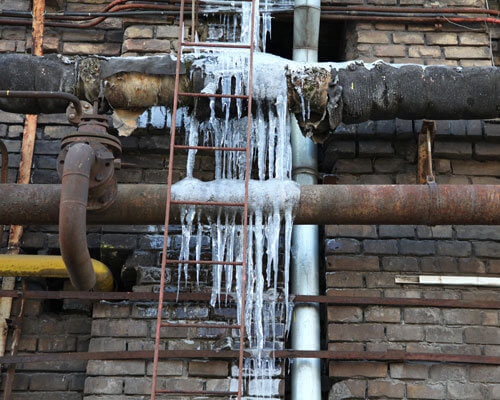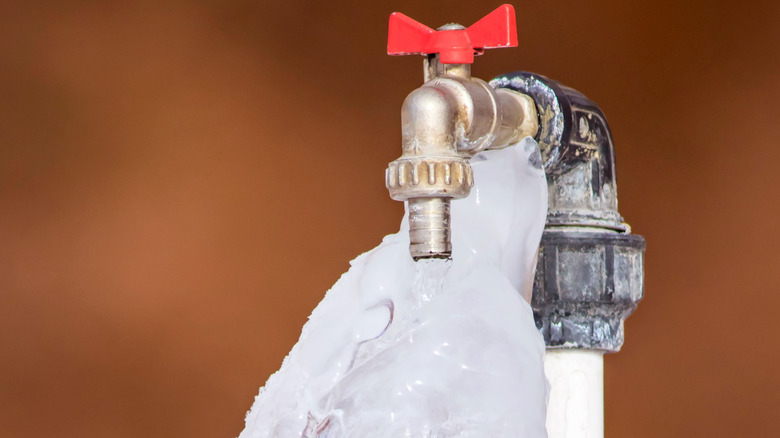Avoiding Frozen Plumbing in Winter: Expert Strategies
Avoiding Frozen Plumbing in Winter: Expert Strategies
Blog Article
This great article following next pertaining to 6 Ways to Prevent Frozen Pipes is highly compelling. Read it for yourself and figure out what you think about it.

Winter can ruin your pipes, specifically by freezing pipelines. Here's how to avoid it from taking place and what to do if it does.
Introduction
As temperatures decline, the risk of frozen pipelines rises, possibly bring about costly repairs and water damage. Comprehending how to prevent icy pipelines is vital for house owners in cool environments.
Prevention Tips
Shielding susceptible pipelines
Cover pipelines in insulation sleeves or make use of warm tape to safeguard them from freezing temperatures. Focus on pipes in unheated or exterior locations of the home.
Heating strategies
Maintain indoor rooms adequately heated up, especially locations with plumbing. Open cupboard doors to permit warm air to circulate around pipelines under sinks.
Exactly how to recognize frozen pipes
Search for decreased water flow from taps, uncommon odors or sounds from pipelines, and noticeable frost on subjected pipes.
Long-Term Solutions
Architectural modifications
Take into consideration rerouting pipes far from outside wall surfaces or unheated areas. Include additional insulation to attics, basements, and crawl spaces.
Upgrading insulation
Invest in high-grade insulation for pipes, attics, and walls. Correct insulation aids keep consistent temperatures and reduces the threat of frozen pipes.
Safeguarding Outdoor Plumbing
Garden tubes and outside taps
Detach and drain pipes yard pipes prior to winter months. Set up frost-proof spigots or cover exterior taps with insulated caps.
Recognizing Frozen Pipes
What triggers pipes to freeze?
Pipes ice up when exposed to temperatures listed below 32 ° F (0 ° C) for prolonged durations. As water inside the pipelines freezes, it broadens, taxing the pipe wall surfaces and potentially triggering them to burst.
Dangers and damages
Icy pipelines can lead to water system disturbances, residential property damage, and expensive repairs. Ruptured pipelines can flood homes and create extensive architectural damages.
Signs of Frozen Piping
Determining icy pipes early can avoid them from rupturing.
What to Do If Your Pipelines Freeze
Immediate activities to take
If you believe icy pipes, maintain faucets open to ease stress as the ice melts. Use a hairdryer or towels soaked in warm water to thaw pipes slowly.
Final thought
Stopping frozen pipes needs proactive measures and fast responses. By comprehending the reasons, indicators, and safety nets, homeowners can protect their plumbing during cold weather.
5 Ways to Prevent Frozen Pipes
Drain Outdoor Faucets and Disconnect Hoses
First, close the shut-off valve that controls the flow of water in the pipe to your outdoor faucet. Then, head outside to disconnect and drain your hose and open the outdoor faucet to allow the water to completely drain out of the line. Turn off the faucet when done. Finally, head back to the shut-off valve and drain the remaining water inside the pipe into a bucket or container. Additionally, if you have a home irrigation system, you should consider hiring an expert to clear the system of water each year.
Insulate Pipes
One of the best and most cost-effective methods for preventing frozen water pipes is to wrap your pipes with insulation. This is especially important for areas in your home that aren’t exposed to heat, such as an attic. We suggest using foam sleeves, which can typically be found at your local hardware store.
Keep Heat Running at 65
Your pipes are located inside your walls, and the temperature there is much colder than the rest of the house. To prevent your pipes from freezing, The Insurance Information Institute suggests that you keep your home heated to at least 65 degrees, even when traveling. You may want to invest in smart devices that can keep an eye on the temperature in your home while you’re away.
Leave Water Dripping
Moving water — even a small trickle — can prevent ice from forming inside your pipes. When freezing temps are imminent, start a drip of water from all faucets that serve exposed pipes. Leaving a few faucets running will also help relieve pressure inside the pipes and help prevent a rupture if the water inside freezes.
Open Cupboard Doors
Warm your kitchen and bathroom pipes by opening cupboards and vanities. You should also leave your interior doors ajar to help warm air circulate evenly throughout your home.

We had been made aware of that report about Winter Plumbing Precautions: Preventing Frozen Pipes through a pal on a different site. Are you aware of another individual who is involved in the niche? Why not share it. Thank you for going through it.
Go Deal Now Report this page